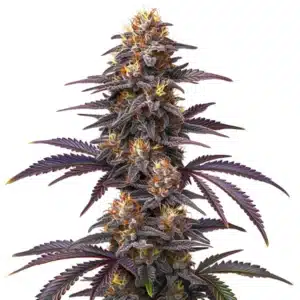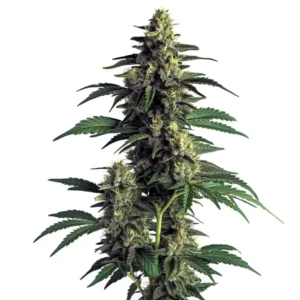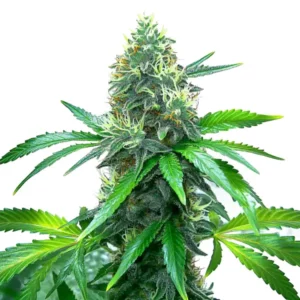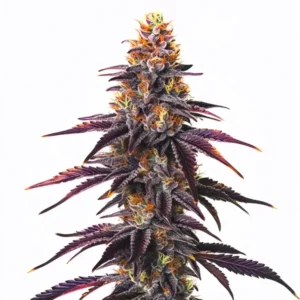
Timing and Light Cycles: What Photoreceptors Control
Light plays a crucial role in cannabis growth. Photoreceptors are the key players. These proteins in plants sense light, helping them determine when to grow, flower, and rest. Timing and Light Cycles: What Photoreceptors Control can make or break your cultivation efforts. If you’re new to this, don’t worry. Even seasoned growers find this topic fascinating.
Photoreceptors in plant light cycles are like the plant’s eyes. They tell the plant when it’s day or night. They influence everything from germination to flowering. Cannabis plants rely heavily on these cues. A perfect example is the strain GG4 from Blimburn Seeds. It thrives when you nail the timing of photoreceptor activation.
Recommended Strains
GG4
|
|
THC | 27% (High) |
|
|
Type | Feminized |
|
|
Yield | High |
|
|
Phenotype | 40% Indica / 60% Sativa |
Blue Dream
|
|
THC | 17% - 24% (Medium) |
|
|
Type | Feminized |
|
|
Yield | High |
|
|
Phenotype | 50% Indica / 50% Sativa |
Circadian rhythms and photoreceptors work together. They create a 24-hour cycle, akin to an internal clock. This cycle is vital for processes like photosynthesis and nutrient uptake. When you understand how photoreceptors affect light cycles, you can manipulate them. This helps optimize your plants’ growth and yield.
How Photoreceptors Affect Light Cycles
Photoreceptors are diverse. Some detect red light, while others are sensitive to blue light. Each type plays a unique role in plant development. For instance, phytochromes are sensitive to red light. They help the plant differentiate between day and night. Cryptochromes and phototropins are more inclined towards blue light, influencing growth directions.
Knowing how photoreceptors affect light cycles allows you to tweak your setup. Imagine growing Blue Dream. This strain can benefit from a well-managed light cycle. By adjusting light exposure, you can control when it enters the flowering stage. This is crucial for achieving that potent, aromatic yield.
Photoreceptors in plant light cycles are essential for adapting to changing environments. They allow plants to respond to seasonal shifts, ensuring survival and optimal growth. By knowing these mechanisms, growers can simulate natural conditions indoors. This adaptability is crucial for strains sensitive to environmental changes.
Besides light quality, the duration of exposure plays a significant role. The timing of photoreceptor activation can be manipulated to extend or shorten growth phases. For example, strategic use of artificial lighting can mimic long summer days or short winter days, encouraging desired growth responses in cannabis plants. Knowing Timing and Light Cycles: What Photoreceptors Control is key for growers who want to optimize development and maximize yields.
Timing of Photoreceptor Activation
Timing is everything in cannabis growth. Photoreceptors need precise activation to function properly. When you switch lights on or off impacts how your plants grow. Plants like Gelato require a balanced light schedule to flourish. Too much or too little light can stress the plant.
Adjusting the timing of photoreceptor activation can trigger different growth phases. For instance, longer light periods are ideal for vegetative growth. Shortening the light exposure signals the plant to start flowering. This manipulation is crucial for maximizing yield and potency.
Timing and Light Cycles: What Photoreceptors Control is a critical aspect in optimizing growth. By regulating the timing of photoreceptor activation, you can synchronize plant development with desired growth objectives. This precision is particularly beneficial in controlled environments where light exposure is the primary growth determinant.
As technology evolves, tools like programmable LED lights offer unprecedented control over light cycles. These advancements allow growers to experiment with the timing of photoreceptor activation, pushing the boundaries of yield and quality. Knowing these dynamics is a game-changer for modern cannabis cultivation.
Promos & Deals
Function of Photoreceptors in Timing Mechanisms
Photoreceptors act as the plant’s internal clock. They coordinate with circadian rhythms to regulate timing mechanisms. This coordination is vital for ensuring your plants grow strong and healthy. It affects everything from leaf movement to flowering time.
For growers, this means setting up a reliable light cycle is crucial. With strains like GG4, managing these timing mechanisms can lead to robust plants. You’ll notice better growth rates and increased resistance to stress. Photoreceptors in plant light cycles are like conductors in an orchestra. When they work in harmony, the results are spectacular.
Knowing the function of photoreceptors in timing mechanisms provides insights into plant behavior. By observing how plants react to changes in light, growers can anticipate and respond to their needs. This proactive approach ensures a stable and productive cultivation environment.
Integrating knowledge about timing mechanisms with practical cultivation strategies can transform outcomes. With precise control over light cycles, growers can replicate optimal conditions, tailoring the growth environment to each plant’s unique requirements. This customization leads to healthier plants and higher yields.

Circadian Rhythms and Photoreceptors
Circadian rhythms are the plant’s natural 24-hour cycles. Photoreceptors play a significant role in maintaining these rhythms. They respond to changes in light, helping the plant adjust its internal clock. This adjustment is critical for synchronizing various physiological processes.
In cannabis cultivation, knowing circadian rhythms and photoreceptors can give you an edge. By aligning your light cycles with these natural rhythms, you can enhance growth. For example, adjusting the light spectrum and duration can optimize photosynthesis. This leads to healthier plants and better yields.
Timing and Light Cycles: What Photoreceptors Control involves knowing the synergy between circadian rhythms and photoreceptors. This relationship is foundational for creating an environment that supports natural growth patterns, promoting robust plant health and productivity.
By carefully managing circadian rhythms and photoreceptor interactions, growers can reduce stress and improve the resilience of cannabis plants. This alignment fosters a more natural growth cycle, resulting in better flavor profiles and cannabinoid content in the final product.

FAQs
What are photoreceptors in plant light cycles?
Photoreceptors are proteins that detect light in plants. They play a crucial role in regulating plant growth and development. By sensing different wavelengths of light, photoreceptors inform the plant about the time of day. This information helps the plant decide when to grow, rest, or flower.
In cannabis cultivation, knowing photoreceptors is invaluable. They allow you to manipulate growth cycles, enhancing your yield. For example, by providing more red light, you can encourage flowering. This knowing is key for both novice and experienced growers.
Photoreceptors in plant light cycles are integral to tailoring the growth environment. By identifying which receptors are most active at different stages, growers can fine-tune their lighting strategies. This precision leads to more efficient energy use and better overall plant performance.
By leveraging the characteristics of photoreceptors, growers can create customized light recipes. These recipes cater to the specific needs of cannabis strains, optimizing each phase of growth. This level of control can significantly enhance both the quality and quantity of the harvest.
How do photoreceptors affect light cycles?
Photoreceptors influence how a plant responds to light. They determine when a plant should begin photosynthesis or enter flowering. This control over light cycles can be used to optimize plant growth. By adjusting light duration and intensity, growers can affect plant behavior.
For cannabis strains like Gelato, precise control over light cycles can lead to exceptional results. By managing how photoreceptors react to light, you can enhance growth stages effectively. This manipulation is especially useful when cultivating indoors.
Knowing how photoreceptors affect light cycles provides a roadmap for optimizing growth conditions. By aligning light schedules with photoreceptor activity, growers can create an environment that maximizes growth potential while minimizing stress factors.
With the right light cycle strategy, it’s possible to influence not just the growth rate but also the quality of the cannabis produced. This knowledge empowers growers to make informed decisions, ensuring the best possible outcomes for their crops.
What is the timing of photoreceptor activation?
The timing of photoreceptor activation refers to when these proteins sense light changes. This timing is crucial for regulating plant physiology. For cannabis growers, it means knowing when to switch lights on or off. Proper timing can trigger desired growth phases.
Plants like GG4 benefit from precise timing. Consistent light schedules ensure optimal growth and yield. If you’re aiming for high-quality buds, focus on timing your light cycles accurately.
Mastering the timing of photoreceptor activation is a key aspect of advanced cultivation techniques. By synchronizing light cycles with natural plant rhythms, growers can achieve more consistent and reliable results across different growing conditions.
Incorporating modern technology, such as smart lighting systems, can streamline the management of light cycles. These systems offer the ability to automate and adjust lighting schedules with precision, enhancing the efficiency of photoreceptor activation.
How do circadian rhythms and photoreceptors interact?
Circadian rhythms are natural cycles that repeat every 24 hours. Photoreceptors help maintain these rhythms by responding to light cues. This interaction is essential for synchronizing plant processes like photosynthesis and nutrient uptake.
In cannabis cultivation, aligning your grow lights with circadian rhythms can enhance plant health. Strains like Blue Dream thrive when their light cycles match natural rhythms. This alignment leads to better growth and increased yields.
Exploring the interaction between circadian rhythms and photoreceptors illuminates the complex dynamics of plant growth. This knowing is crucial for implementing strategies that foster natural growth cycles, improving overall plant health.
By mimicking the natural light conditions that plants experience in their native environments, growers can enhance the genetic potential of their cannabis strains. This approach results in more vigorous plants, capable of producing higher yields and superior quality buds.
What is the function of photoreceptors in timing mechanisms?
Photoreceptors are integral to a plant’s timing mechanisms. They act as sensors that inform the plant about environmental changes. This information helps the plant regulate its growth cycles, ensuring it thrives in its environment.
For cannabis growers, leveraging the function of photoreceptors in timing mechanisms can improve cultivation outcomes. By mimicking natural light patterns, you can optimize growth and increase yield. This knowing is your ticket to successful cannabis cultivation.
The function of photoreceptors in timing mechanisms extends beyond mere light detection. These proteins are involved in complex signaling pathways that integrate environmental cues, allowing plants to optimize their growth strategies in response to changing conditions.
By mastering the role of photoreceptors in timing mechanisms, growers can anticipate and adapt to the needs of their plants. This proactive approach results in enhanced growth performance, unlocking the full potential of cannabis cultivation.




















